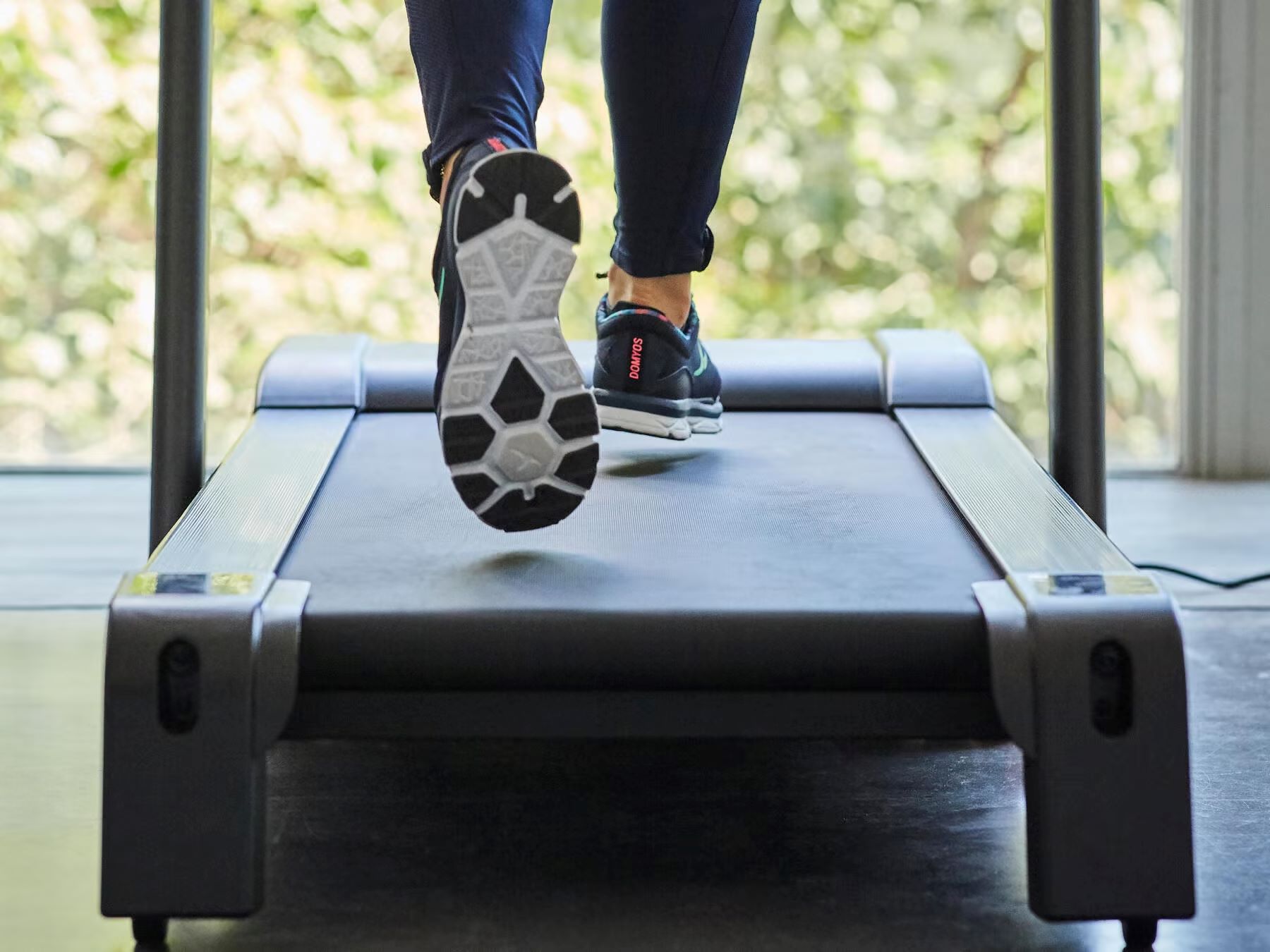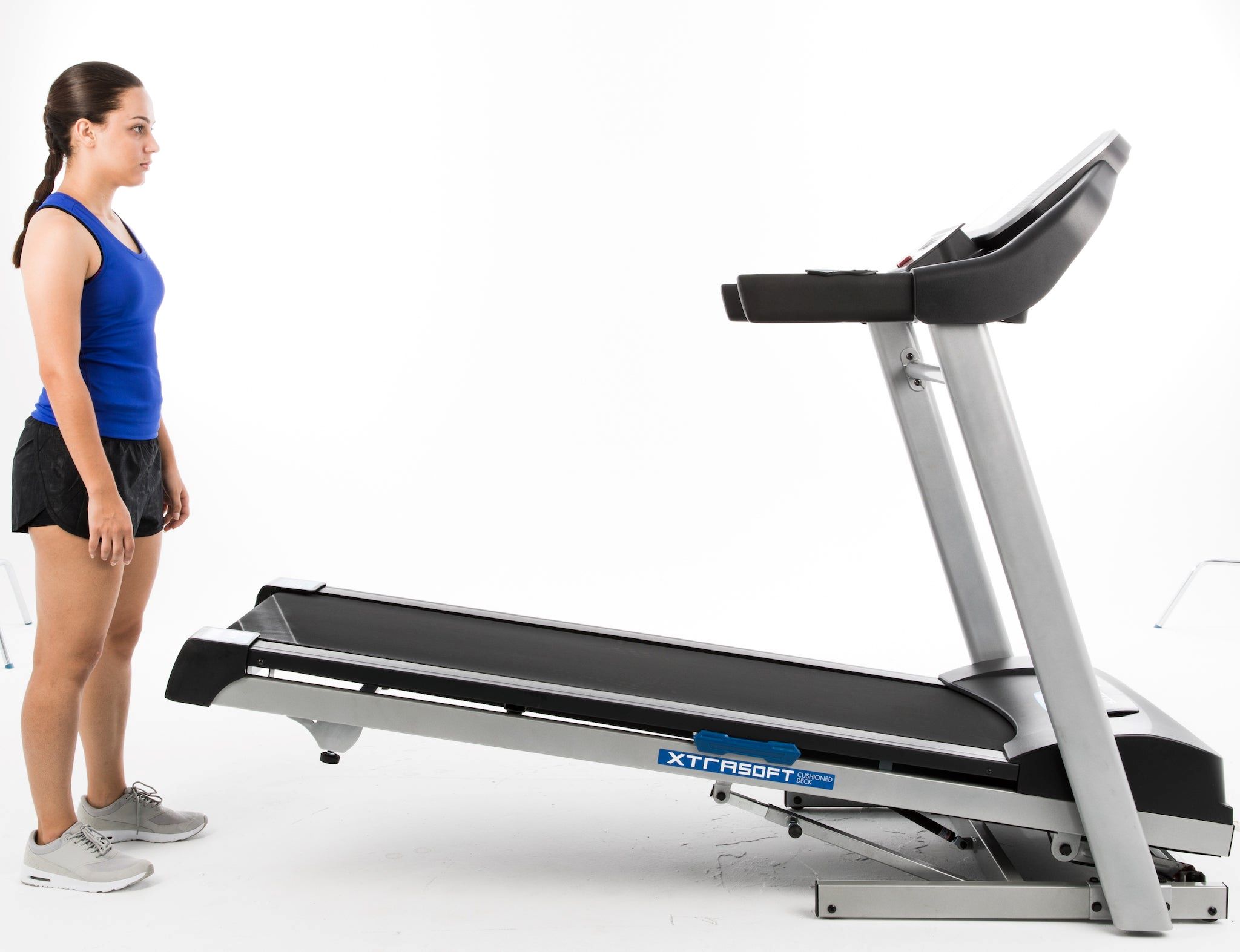Home>Misc>Featured>What Heart Rate Zone Does Someone Need To Be In To Build Cardiovascular Fitness?


Featured
What Heart Rate Zone Does Someone Need To Be In To Build Cardiovascular Fitness?
Modified: August 21, 2023
Discover the optimal heart rate zone to build cardiovascular fitness with our featured article. Enhance your workouts and maximize your results today!
Introduction
When it comes to building cardiovascular fitness, understanding the importance of heart rate zones is crucial. Different heart rate zones target different fitness goals, and by training within the appropriate zone, individuals can maximize the effectiveness of their workouts. Whether you’re a beginner or an experienced athlete, knowing which heart rate zone to be in can help you optimize your training and achieve better results.
Cardiovascular fitness refers to the body’s ability to efficiently deliver oxygen to the muscles during physical activity. This is an essential component of overall fitness and is vital for improving endurance, stamina, and overall cardiovascular health. By engaging in cardiovascular training, such as running, cycling, or swimming, individuals can strengthen their heart and lungs, improve circulation, and increase their aerobic capacity.
However, not all workouts are created equal when it comes to building cardiovascular fitness. Your heart rate plays a key role in determining the intensity of your workout and the specific benefits you will derive from it. By training in different heart rate zones, you can target specific fitness goals and tailor your workouts to your individual needs.
Determining your maximum heart rate is the first step in understanding heart rate zones. Simply put, your maximum heart rate is the highest number of times your heart can beat in one minute during intense exercise. Although there are various methods to calculate maximum heart rate, a common formula is to subtract your age from 220. For example, if you are 30 years old, your estimated maximum heart rate would be 190 beats per minute.
Once you have determined your maximum heart rate, you can then determine your target heart rate zone for cardiovascular fitness. The target heart rate zone is a range of heart rates that you should aim to maintain during your workouts in order to achieve optimal cardiovascular benefits. Generally, this zone is expressed as a percentage range of your maximum heart rate.
Understanding Cardiovascular Fitness
Cardiovascular fitness, also known as aerobic fitness, refers to the ability of the heart, lungs, and blood vessels to deliver oxygen-rich blood to the muscles during physical activity. It is a crucial aspect of overall fitness and plays a significant role in supporting an active and healthy lifestyle.
Engaging in cardiovascular exercises, such as running, cycling, swimming, or dancing, helps strengthen the heart muscle and improves its efficiency in pumping blood. It also enhances lung capacity and improves circulation, allowing oxygen to be delivered more effectively to the muscles.
One of the primary benefits of cardiovascular fitness is improved endurance. Regular cardiovascular training improves the body’s ability to perform prolonged physical activity without experiencing excessive fatigue. It allows individuals to engage in activities for extended periods of time, whether it’s a long-distance run, a cycling race, or a hiking expedition.
In addition to endurance, cardiovascular fitness also contributes to weight management. During cardiovascular exercise, the body burns calories, helping to maintain a healthy weight or promote weight loss when combined with a balanced diet. The intensity and duration of the exercise play a crucial role in determining the number of calories burned.
Regular cardiovascular workouts also have a positive impact on mental health. Exercise stimulates the release of endorphins, which are known as the “feel-good” hormones. These endorphins help reduce stress, anxiety, and depression, while also improving overall mood and sleep quality.
Furthermore, cardiovascular fitness is essential for maintaining a healthy cardiovascular system. It helps to lower blood pressure, reduce the risk of heart disease, and improve cholesterol levels. Regular aerobic exercise strengthens the heart muscle, making it more efficient and reducing strain on the cardiovascular system.
Whether your goal is to improve overall fitness, lose weight, or enhance endurance, cardiovascular fitness is the key. By engaging in regular cardiovascular exercise and understanding the importance of heart rate zones, individuals can take control of their fitness journey and achieve optimal results.
Importance of Heart Rate Zones
Heart rate zones are specific ranges of heart rates that correspond to different intensities of exercise. Each zone represents a different level of effort and has unique benefits for cardiovascular fitness. Understanding and training within these zones is essential for maximizing the effectiveness of your workouts and achieving specific fitness goals.
One of the primary reasons why heart rate zones are important is that they help ensure you are training at the right intensity. Exercising at the correct intensity allows you to challenge your cardiovascular system without overexerting yourself. Training too hard can lead to fatigue, injuries, or burnout, while training too lightly may not provide sufficient stimulation for improvement.
Heart rate zones help you tailor your workouts to your specific fitness goals. Whether you want to improve endurance, burn fat, or boost aerobic capacity, training in the appropriate heart rate zone is crucial. By aligning your workouts with your goals, you can make the most of your training time and see better results.
Another benefit of heart rate zones is that they provide a measurable and objective way to gauge your progress. By tracking your heart rate during exercise, you can ensure that you are consistently challenging yourself and making progress over time. Monitoring your heart rate can also help identify any irregularities and ensure your workouts are safe and effective.
Heart rate zones also play a role in optimizing recovery. By training in different zones, you can vary the intensity and workload on your cardiovascular system. This variation helps prevent overuse injuries and allows for adequate recovery between workouts.
Furthermore, heart rate zones can help individuals with specific health conditions monitor and manage their exercise intensity. For example, individuals with hypertension or heart disease may need to exercise within specific heart rate ranges to ensure they are not placing excessive strain on their cardiovascular system.
In summary, heart rate zones are important because they allow you to train at the appropriate intensity, tailor your workouts to your fitness goals, track your progress, optimize recovery, and ensure safety during exercise. By understanding and utilizing heart rate zones, you can take your cardiovascular fitness to the next level and achieve your desired results.
Determining Maximum Heart Rate
Knowing your maximum heart rate is essential for determining your target heart rate zones and optimizing your cardiovascular workouts. The maximum heart rate is the highest number of times your heart can beat in one minute during intense exercise. While there are various methods to calculate it, a common approach is to use the formula of subtracting your age from 220.
However, it’s important to note that the formula is a general estimate, and individual variations may exist. Factors such as fitness level, genetics, and overall health can influence your maximum heart rate. Therefore, it’s always best to consult with a healthcare professional or a qualified fitness trainer for a more accurate assessment.
For example, if you are 30 years old, subtracting your age from 220 would give you an estimated maximum heart rate of 190 beats per minute. This means that during intense exercise, your heart rate should not exceed 190 beats per minute. It’s worth noting that this is just a guideline, and your actual maximum heart rate may be slightly higher or lower.
In some cases, individuals may undergo a stress test or a VO2 max test to determine their maximum heart rate more accurately. These tests involve monitoring your heart rate while performing specific exercises to assess your cardiovascular fitness and response to exertion.
Another method to estimate your maximum heart rate is through self-monitoring during exercise. By engaging in a high-intensity workout and monitoring your heart rate, you can identify the peak rate you reach. This can give you a rough estimate of your maximum heart rate.
It’s important to remember that while maximum heart rate provides a useful guideline, it’s not the sole determinant of exercise intensity. Other factors, such as perceived exertion, breathing rate, and overall fitness level, should also be taken into account when determining the appropriate intensity for your workouts.
Understanding and regularly monitoring your maximum heart rate can help you stay within a safe and effective range during your cardiovascular workouts. This knowledge allows you to adjust the intensity of your exercise to match your fitness goals and optimize the benefits you can achieve.
Target Heart Rate Zone for Cardiovascular Fitness
Once you have determined your maximum heart rate, you can identify your target heart rate zone for cardiovascular fitness. This zone is a range of heart rates that you should aim to maintain during your workouts to achieve optimal cardiovascular benefits. The target heart rate zone is typically expressed as a percentage range of your maximum heart rate.
The American Heart Association (AHA) provides a commonly used formula to calculate these target heart rate zones. The zones are divided into different intensity levels, each targeting specific fitness goals:
- Zone 1: Very Light Intensity (50-60% of Maximum Heart Rate) – This zone is ideal for beginners or individuals looking to warm up or cool down. It helps improve overall cardiovascular health and aids in recovery.
- Zone 2: Light Intensity (60-70% of Maximum Heart Rate) – This zone is suitable for individuals looking to maintain fitness or burn fat. It enhances endurance and improves cardiovascular function.
- Zone 3: Moderate Intensity (70-80% of Maximum Heart Rate) – This zone is commonly referred to as the “aerobic zone.” It targets aerobic fitness and is beneficial for improving endurance and overall cardiovascular health.
- Zone 4: Hard Intensity (80-90% of Maximum Heart Rate) – This zone is for more advanced athletes or individuals looking to increase their fitness level. It helps improve speed, power, and anaerobic capacity.
- Zone 5: Maximum Intensity (90-100% of Maximum Heart Rate) – This zone is used for short bursts of intense exercise, such as sprinting or interval training. It focuses on maximum effort and helps improve speed and anaerobic capacity.
It’s important to note that the duration of your workout within each heart rate zone will vary based on your fitness level, overall health, and specific training goals. Beginners may start with shorter durations in higher zones and gradually increase as they build their cardiovascular fitness.
To effectively train within your target heart rate zone, monitoring your heart rate during exercise is crucial. This can be done using a heart rate monitor, wearable fitness device, or manually monitoring your pulse. Adjust the intensity of your workout by increasing or decreasing your effort to stay within the desired zone.
By training within the appropriate target heart rate zone for your fitness goals, you can optimize the benefits of your cardiovascular workouts. Whether you are aiming to improve endurance, burn fat, or increase aerobic capacity, understanding and utilizing the target heart rate zones will help you achieve your desired results.
Zone 1: Very Light Intensity (50-60% of Maximum Heart Rate)
Zone 1 of the target heart rate zones corresponds to very light intensity exercise, typically ranging from 50 to 60% of your maximum heart rate. This zone is ideal for beginners, those recovering from an injury or illness, or individuals looking to warm up or cool down from more intense workouts.
Engaging in activities within this heart rate range helps to improve overall cardiovascular health and aids in the recovery process. It is considered a gentle form of exercise that provides a low-impact workout, allowing the body to gradually adapt to physical activity.
Zone 1 exercises are light enough that individuals can carry on a conversation comfortably without feeling breathless or excessively fatigued. This level of intensity is perfect for those who are just starting their fitness journey or looking to maintain a baseline level of fitness.
Some examples of exercises that fall within Zone 1 include brisk walking, leisurely cycling, gentle swimming, or performing light yoga or stretching routines. These activities help promote blood flow and gently elevate the heart rate while placing minimal stress on the body.
Individuals recovering from an injury or illness often begin their rehabilitation process in Zone 1 to gradually increase their physical activity and strengthen their cardiovascular system. It allows the body to slowly regain strength and endurance while minimizing the risk of reinjury or setbacks.
Additionally, Zone 1 serves as an excellent warm-up or cool-down phase before or after more intense workouts. It helps prepare the body for exercise by increasing blood flow to the muscles and preparing the cardiovascular system for higher intensities. Similarly, it aids in gradually cooling down the body after a workout, allowing the heart rate to gradually return to its resting state.
While Zone 1 may not provide the same calorie-burning or endurance-building benefits as higher-intensity zones, it plays a vital role in overall cardiovascular fitness. It serves as a foundation for building stamina and allowing the body to adapt to increased physical activity.
Whether you are a beginner, recovering from injury, or simply need a gentle workout, incorporating Zone 1 exercises into your fitness routine can have a positive impact on your cardiovascular health. It provides a solid starting point and helps create a strong foundation for progressing to higher-intensity workouts and achieving your fitness goals.
Zone 2: Light Intensity (60-70% of Maximum Heart Rate)
Zone 2 of the target heart rate zones corresponds to light intensity exercise, typically ranging from 60 to 70% of your maximum heart rate. This zone is suitable for individuals who want to maintain their current fitness level, burn fat, and improve aerobic capacity.
Engaging in activities within this heart rate range helps to enhance endurance, improve cardiovascular function, and increase overall fitness. It provides a balance between intensity and duration, allowing individuals to sustain exercise for longer periods without excessive fatigue.
Zone 2 exercises are characterized by a moderate level of effort, where you can still carry on a conversation with mild difficulty. While you may feel a slight increase in breathing and heart rate, you should not feel overly breathless or strained.
Examples of exercises that fall within Zone 2 include jogging, brisk walking, cycling at a moderate pace, swimming laps, or participating in low-impact aerobic classes. These activities elevate the heart rate and challenge the cardiovascular system without being overly stressful on the body.
Training within Zone 2 is particularly effective for individuals looking to burn fat and improve their aerobic fitness. During light intensity exercise, the body relies primarily on stored fat as fuel, making it an ideal zone for those aiming for weight loss or body composition improvements.
In terms of aerobic fitness, training in Zone 2 helps increase the heart’s stroke volume, meaning it can pump a higher volume of oxygenated blood to the muscles. This results in improved aerobic capacity and endurance, allowing individuals to engage in prolonged physical activities with less fatigue.
Zone 2 exercises are also great for active recovery days or lower-intensity workouts between more intense sessions. They provide a way to maintain fitness levels while allowing the body to recover from higher-intensity training and reduce the risk of overtraining.
It’s important to note that training solely in Zone 2 may not provide the same calorie-burning or muscle-building benefits as higher-intensity zones. However, incorporating regular Zone 2 workouts into your training routine helps establish a solid aerobic base and prepares your body for more demanding workouts.
Whether you’re aiming to improve endurance, burn fat, or maintain your current fitness level, incorporating Zone 2 exercises into your routine can contribute to your cardiovascular fitness and overall well-being. It strikes a balance between intensity and sustainability, helping you achieve your fitness goals while keeping your workouts enjoyable and manageable.
Zone 3: Moderate Intensity (70-80% of Maximum Heart Rate)
Zone 3 of the target heart rate zones corresponds to moderate intensity exercise, typically ranging from 70 to 80% of your maximum heart rate. This zone is commonly referred to as the “aerobic zone” and offers a balance between endurance and intensity.
Engaging in activities within this heart rate range is beneficial for improving aerobic fitness, endurance, and overall cardiovascular health. It challenges the cardiovascular system while still allowing individuals to sustain exercise for a moderate duration.
Zone 3 exercises require a moderate level of effort, where you can still carry on a conversation but with slightly increased difficulty. Breathing becomes deeper, and you may feel a steady increase in heart rate, indicating that you are working at an aerobic level.
Examples of exercises that fall within Zone 3 include running at a steady pace, moderate cycling, swimming laps with moderate effort, or participating in aerobic dance classes. These activities elevate the heart rate and challenge the cardiovascular system, leading to improvements in endurance and aerobic capacity.
Training within Zone 3 is particularly effective for improving aerobic fitness and increasing the efficiency of the body’s oxygen utilization. During this zone, the body primarily relies on the aerobic energy system, which utilizes oxygen to break down carbohydrates and fats for fuel.
By consistently training in Zone 3, individuals can experience numerous benefits, including increased cardiovascular efficiency, improved endurance, and enhanced overall fitness. Regular aerobic workouts in this zone help strengthen the heart, improve lung capacity, and allow the body to sustain physical activity for longer durations.
In addition to fitness improvements, Zone 3 exercises are effective for weight management. The higher intensity within this zone leads to increased calorie burning during the workout and can contribute to overall weight loss or weight maintenance when combined with a balanced diet.
It’s worth noting that while Zone 3 exercises can provide significant benefits, overtraining solely in this zone may lead to burnout or increased risk of injury. It’s important to vary the intensity of your workouts and incorporate recovery days or lighter workouts to allow your body to adapt and grow stronger.
Whether you’re looking to improve aerobic fitness, increase endurance, or manage your weight, incorporating Zone 3 exercises into your routine can contribute to your overall cardiovascular health and fitness. It provides a challenging yet sustainable level of intensity, helping you reach your fitness goals and improve your overall well-being.
Zone 4: Hard Intensity (80-90% of Maximum Heart Rate)
Zone 4 of the target heart rate zones corresponds to hard intensity exercise, typically ranging from 80 to 90% of your maximum heart rate. This zone pushes the limits of your cardiovascular system and is designed to improve speed, power, and anaerobic capacity.
Engaging in activities within this heart rate range challenges your body’s cardiovascular limits and helps you push through thresholds. It is suitable for individuals who want to enhance their athletic performance, improve anaerobic fitness, and increase speed and power.
Zone 4 exercises require a high level of effort and can be challenging. Breathing becomes heavy, and you may find it challenging to speak in full sentences due to increased strain on the cardiovascular system.
Examples of exercises that fall within Zone 4 include high-intensity interval training (HIIT), sprinting, fast-paced cycling, intense circuit training, or participating in high-intensity sports such as basketball or soccer. These activities elevate the heart rate significantly and demand maximum effort and power output.
The main focus of training in Zone 4 is to improve anaerobic capacity and increase the body’s ability to perform high-intensity, short-duration activities. It helps develop fast-twitch muscle fibers, enhances speed, and improves overall athletic performance.
Training at this level of intensity can also lead to increased calorie burning and metabolic rate, making it an effective zone for weight management. The body continues to burn calories even after the workout due to the increase in post-exercise oxygen consumption (EPOC).
It’s important to note that training in Zone 4 should be approached with caution and individual fitness levels should be taken into consideration. It is recommended for individuals who have a solid cardiovascular base and are looking to take their workouts to the next level.
Proper warm-up and cool-down exercises are crucial when training in Zone 4 to prevent injuries and allow for proper recovery between workouts. It’s also important to listen to your body and not overexert yourself, as pushing too hard for extended periods can lead to burnout or increased risk of overuse injuries.
If you’re new to high-intensity training, gradually building up your fitness level and incorporating interval training can be an effective way to begin training in Zone 4. Monitoring your heart rate during workouts using a heart rate monitor can also help ensure you stay within the target heart rate range.
Incorporating Zone 4 exercises into your training routine can help you take your athletic performance to the next level, improve anaerobic fitness, increase speed and power, and burn calories more efficiently. However, it’s important to approach this zone with respect for your body’s limits and to balance it with appropriate recovery and lower intensity workouts.
Zone 5: Maximum Intensity (90-100% of Maximum Heart Rate)
Zone 5 of the target heart rate zones corresponds to maximum intensity exercise, typically ranging from 90 to 100% of your maximum heart rate. This zone represents the highest level of effort and is used for short bursts of intense exercise to improve maximum performance and anaerobic capacity.
Engaging in activities within this heart rate range challenges your body to its limits and pushes your cardiovascular system to its maximum capacity. It is suitable for highly trained athletes or individuals looking to increase their performance levels and overall fitness.
Zone 5 exercises require an all-out effort, and you will be breathing heavily and find it difficult to carry on a conversation. It is characterized by short bursts of intense activity, followed by designated periods of rest or recovery.
Examples of exercises that fall within Zone 5 include sprinting at maximum effort, high-intensity interval training (HIIT) with short, intense intervals, powerlifting, or participating in competitive sports that demand maximum effort and explosive power.
The main focus of training in Zone 5 is to improve the body’s capacity for high-intensity, short-duration activities and to develop maximum power output. Through this type of training, individuals can enhance their anaerobic fitness, increase speed and explosiveness, and improve their overall athletic performance.
Training at this level of intensity will result in a significant increase in calorie burning and can contribute to improvements in body composition. It is important to note that training in Zone 5 should be done with caution, as the high level of effort places significant stress on the body.
Proper warm-up and cool-down exercises are essential when training in Zone 5, as they help prepare the body for intense activity and aid in recovery. It is crucial to listen to your body, pay attention to any signs of fatigue or discomfort, and allow sufficient time for rest and recovery between intense workouts.
Training in Zone 5 is not suitable for everyone and should be approached with caution, especially for individuals with underlying health conditions or those who are new to high-intensity training. It is important to gradually build up your fitness level and seek guidance from a qualified fitness professional or coach.
Incorporating Zone 5 exercises into your training routine can help you push your limits, improve anaerobic capacity, increase power and speed, and achieve peak performance. However, it is crucial to prioritize safety and ensure that your body is adequately prepared for the intense demands of this zone.
Conclusion
The concept of heart rate zones plays a crucial role in maximizing the effectiveness of cardiovascular fitness training. By understanding your maximum heart rate and training within the appropriate heart rate zones, you can optimize your workouts and achieve specific fitness goals.
Cardiovascular fitness is vital for overall health and well-being. It improves endurance, strengthens the heart and lungs, and enhances the body’s ability to efficiently deliver oxygen to the muscles. By engaging in regular cardiovascular exercise, such as running, cycling, or swimming, individuals can improve their cardiovascular health and overall fitness levels.
The target heart rate zones provide a guide for various intensities of exercise, each targeting specific fitness goals. Zone 1, the very light intensity zone, is ideal for beginners and serves as a warm-up or cool-down phase. Zone 2, the light intensity zone, is suitable for maintaining fitness and burning fat. Zone 3, the moderate intensity zone, targets aerobic fitness and endurance. Zone 4, the hard intensity zone, is for advanced athletes and focuses on increasing speed and power. Finally, Zone 5, the maximum intensity zone, is for short bursts of intense exercise to improve maximum performance.
It’s important to remember that individual fitness levels, health conditions, and goals will influence the intensity and duration of exercises within each heart rate zone. Gradually building up your fitness level and seeking guidance from experts is crucial to prevent overexertion or injury.
Monitoring your heart rate during exercise using a heart rate monitor or wearable fitness device can help ensure you stay within your target heart rate zone. By regularly evaluating your heart rate and adjusting the intensity of your workouts, you can optimize the benefits of your cardiovascular training.
In conclusion, understanding heart rate zones and incorporating them into your training routine is key to achieving optimal cardiovascular fitness. By training within the appropriate heart rate zone, you can improve endurance, burn fat, increase aerobic capacity, and enhance overall cardiovascular health. Remember to listen to your body, seek expert advice, and make gradual progress to build a strong foundation for your cardiovascular fitness journey.







